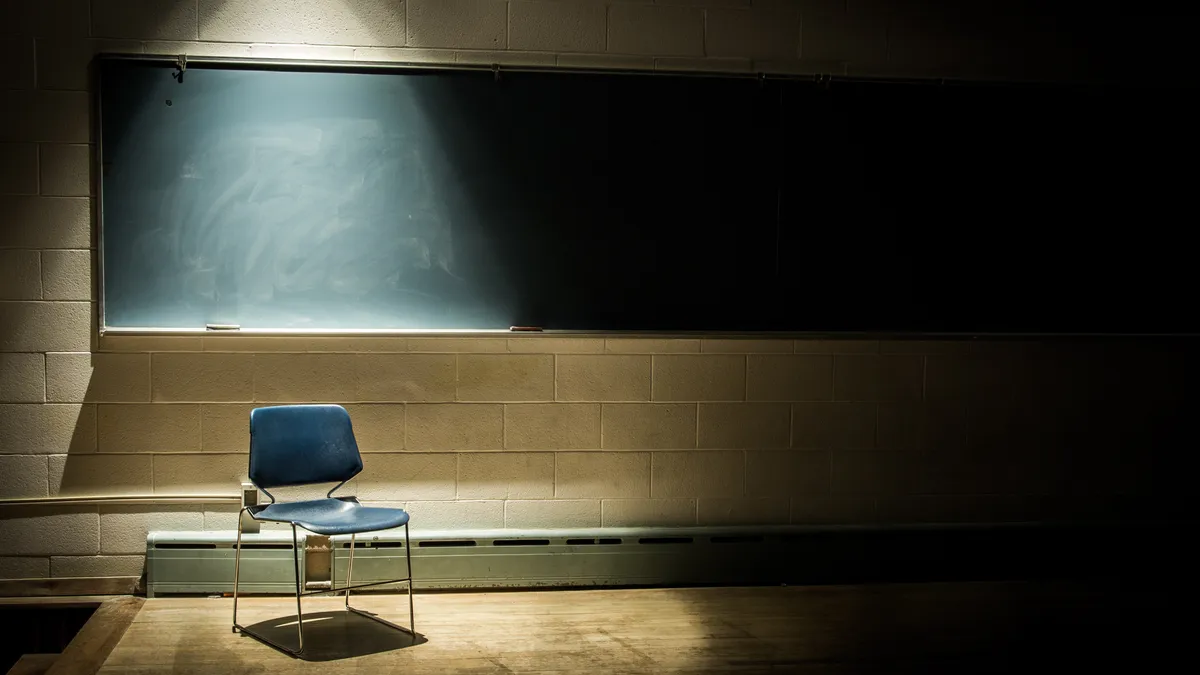Dive Brief:
- California's Davis Joint Unified School District violated students' civil rights when it placed three students with disabilities in private schools and failed to intervene in the repeated use of restraint and seclusion at those schools, an investigation by the U.S. Department of Education's Office for Civil Rights found. One of the students died as a result of a 90-minute prone restraint where the student was held on the ground, face-down in 2018.
- In a letter sent Wednesday to the district, OCR also said there was inadequate identification of all restraints of students with disabilities in its schools or all restraints and seclusions in private school settings.
- As a result of the investigation, Davis Joint USD has agreed to make comprehensive changes to its policies, procedures and training regarding the use of restraint and seclusion.The resolution agreement also requires the district to share its revised seclusion and restraint policies with parents, faculty, administrators, staff and any nonpublic school employees providing special education services to the public school district's students.
Dive Insight:
The three students at the center of the OCR investigation were Davis Joint USD students with disabilities who were placed at two different private schools by the district. The private schools, which only served students with disabilities, were not identified by name in the OCR report. One of those schools is no longer in operation, according to the OCR letter to the district.
In addition to the student who died, two other students were subject to multiple restraints and seclusions. One student was restrained 17 times and placed in a “Time Away” room 11 times at the private school, leading to 4.57 missed school days during the 2017-18 or 2018-19 school year. The OCR investigation said because of record keeping failures from the district and private school, the student likely missed more school than what was documented.
Procedural violations and failures of oversight related to these uses of restraint and seclusion led to OCR's finding that the district denied a free, appropriate public education to these students as required by Section 504 of the Rehabilitation Act of 1973 and Title II of the Americans with Disabilities Act of 1990.
“The tragic death of a child subjected to prolonged and repeated restraint at a school placement through this district underscores the urgency for school communities everywhere to carefully examine their restraint and seclusion practices to safeguard children in their care, in addition to their obligation to satisfy the federal civil rights laws we enforce,” said Assistant Secretary for Civil Rights Catherine Lhamon in a statement.
As concerns over the inappropriate use of restraint and seclusion increase nationwide, education organizations and disability rights advocacy groups continue to push for improvements in training, monitoring and reporting of these practices.
Denise Marshall, CEO for the Council of Parent Attorneys and Advocates, a nonprofit that protects the rights of people with disabilities, called the circumstances of students' restraint and seclusion in this case "a parent's worst nightmare."
"We hope the agreement reached will better protect the civil rights of students with disabilities and assure district and school teams receive the training necessary to support students in a positive way," Marshall said in a statement. "We know when evidence-based practices are used, students and school personnel are safer and every student can thrive in a trusting, supportive environment.”
COPAA and others have been advocating for federal legislation that would prohibit seclusion and reduce or prevent physical restraint. It would also provide funding to train personnel and make improvements to the collection and analyzing of data on the use of restraints.
A 2020 U.S. Government Accountability Office report found data quality control processes for restraint and seclusion were largely ineffective or nonexistent. GAO researchers, for instance, found that during the 2015-16 school year, 70% of districts reported zero incidents of restraint and seclusion.
GAO has recommended that the Education Department help states address misreporting of seclusion and restraint. Until the Education Department “more fully understands why so many school districts are underreporting and misreporting federal restraint and seclusion data, it will likely not be able to help districts improve their reporting, thereby improving the accuracy and utility of the data,” a July GAO report said.






 Dive Awards
Dive Awards





